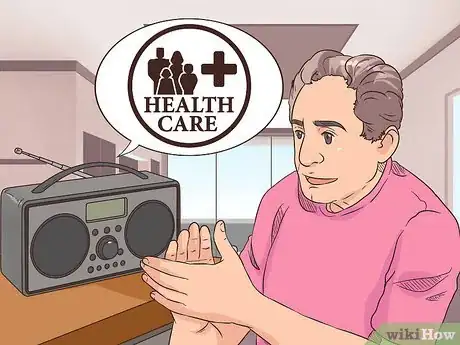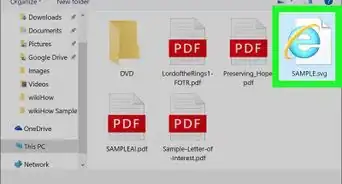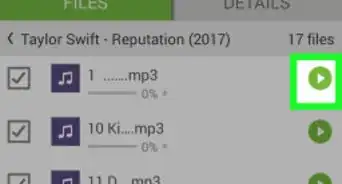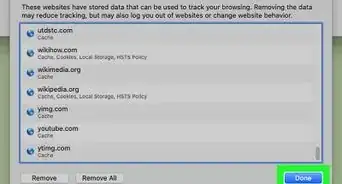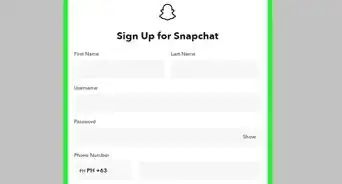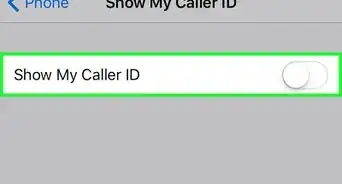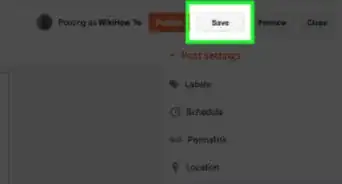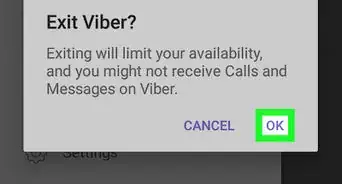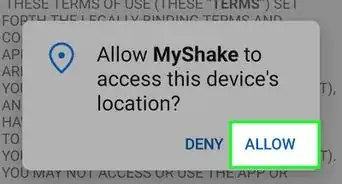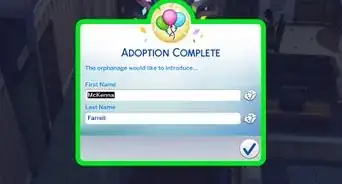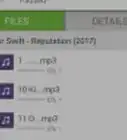This article was co-authored by wikiHow Staff. Our trained team of editors and researchers validate articles for accuracy and comprehensiveness. wikiHow's Content Management Team carefully monitors the work from our editorial staff to ensure that each article is backed by trusted research and meets our high quality standards.
This article has been viewed 4,855 times.
The State of the Union address is a speech given every January by the President of the United States, delivered to Congress and--thanks to technology--the entire world. First given by George Washington in 1790, the State of the Union (SOTU) is a way for the President to broadly outline their policy goals while raising support in Congress and across the country. Tuning into the speech and learning to interpret it can help you think closely about the policies presented and keep informed on the future of the country.[1]
Steps
Watching Online or on TV
-
1Stream the speech on YouTube or Twitter for a convenient, global option. Live streams of the state of the union start a few hours before the speech, but you can tune in any time. Search for “State of the Union YouTube live stream” or “State of the Union Twitter live stream” to find the links. These live streams might lag slightly, but they’re free and good quality.[2]
- YouTube offers several different news programs to stream the speech from, including C-SPAN and Spanish language providers. You’ll be able to hear anchors’ commentary as well as the speech itself.
- Twitter’s live stream comes with scrolling feed of “Top Commentary” tweets.
-
2Watch on a TV news app or website for more commentary options. All major American news networks will be broadcasting the speech live on their websites and mobile apps. This gives you more options if you want to get commentary from a particular station before and after the speech, but the speech itself will be played identically and without commentary on every channel. Many stations will also require you to have a cable subscription to stream their broadcast, so check beforehand to make sure you’ll be able to watch.[3]
- C-SPAN typically offers a free live stream of the speech on their website.
- Spanish-language streams are also available. For other languages, see what closed captioning is offered by each provider.
-
3Tune into a news network on your TV for the highest quality. If you have a TV, the easiest way to watch the State of the Union is to simply tune into a major news network, such as NBC, CBS, and ABC. If you have cable, you could also watch on C-SPAN or a more partisan network for more intense commentary.
- The speech will also be broadcast by major Spanish-language stations.
-
4Listen on the radio if you’ll be out and about. The speech will also be broadcast on the radio in case you’ll be in the car while listening, or prefer to listen instead of watch. NPR typically broadcasts it, and you can go online to see what other local radio stations will be offering it for listeners.[4]
Watching and Listening Closely
-
1Watch and read the news to hear what experts expect. Read or watch a few pieces on the upcoming SOTU to see what the major talking points are expected to be. It can be easy to get caught up in all of the political jargon during the State of the Union, so knowing a few key points to listen for can help keep you focused. News organizations typically start publishing their predictions a few days in advance.
-
2Watch with friends and family to discuss the speech as it happens. Sitting down with friends, family, or roommates to watch the speech can keep you more engaged and interested in the speech. Set out some snacks and drinks and make it an event! You can discuss points you might find confusing and point out interesting points that you might have missed out on otherwise.
- If your friend or family member has differing political viewpoints than you, listen to their point of view and consider their perspective before you respond rashly.
- This is a great opportunity to broaden your horizons and learn to talk civilly to someone with a different opinion than yours.
-
3Tune in by 9pm EST to watch the full speech. The speech begins at 9pm Eastern Standard Time every year, which means it’s starts at 8pm Central Time and 6pm Pacific. Make sure you’ve got your snacks out and stream set up by that time so you can catch the whole speech, which should take about an hour.[5]
- If you tune in half an hour before the speech, you can watch the “red carpet” arrivals of major officials, such as Supreme Court justices and military Joint Chiefs of Staff.
- If you want to hear predictions and commentary about the speech before it starts, coverage on most stations begins 1-2 hours before the President takes the podium.
-
4Track key policy points through the speech. As you watch the speech, listen for moments when the President switches from high, inspiring language to real policy goals. See if these goals match up to what you know of the President’s viewpoints and news organization’s predictions. Try to look around the grand speech-writing techniques to see what the President is actually saying; speechwriters can make just about anything sound good, so it’s important to try to decipher what’s actually being said.
- A good way to recognize these shifts is to listen for points when the President mentions current major issues. These might include healthcare, immigration, the environment, foreign policy, and military action.
-
5Note sentences or points that strike or surprise you. If the President says something that strikes you as particularly powerful or unexpected, take note of it. You can write it down, mention it to someone watching with you, or simply try to remember.
- As you watch and read post-speech commentary, you might see that experts picked up on the same point and want to dissect it as well.
-
6See who the high-profile guests are. Everything about the SOTU is political, including the attendees’ guests. Since 1982, the President nearly always brings an unsung hero to the address, appealing to viewers at home by highlighting ordinary American strength and bravery. Members of Congress often bring pointedly-chosen guests as well, to serve as symbols of their own policies and strike a chord with voters.[6]
- The President will acknowledge their guest in the speech. News anchors and commentators will likely point out other noteworthy guests before and after the speech.
-
7Watch audience reactions to gauge the effect on lawmakers. The reactions of different members of the audience can tell you a lot about what the President is saying. Watch closely when the camera switches to different angles around the house to catch a glimpse of these tense and telling moments.
- For example, members of the President’s party will often stand and applaud during and after the speech, while members of the opposing party will stay seated and silent.
- The President always stands in front of the Vice President and the Speaker of the House. You may be able to pick up on some interesting tension when the Speaker is of the opposing party.
- The justices of the Supreme Court typically sit in the first row, although some justices have skipped the address to show their disapproval of a current President’s policies.
- The First Lady and Second Lady will also be in attendance. You can expect the camera to pan to them from time to time for their positive reactions to different points.
Interpreting the Speech and Reactions
-
1Talk with friends and family about the speech to get other opinions. The next day, ask your family members, friends, classmates or co-workers if they saw the speech and what they thought of it. Talk about what parts stood out to you and ask what they found interesting. Learning what other people picked up on and why can help broaden your own understanding of the speech and the President’s policies.
- Remember to keep an open mind if you’re talking with someone who has different beliefs than you do. If you don’t think you can be polite or courteous, avoid talking to them about the speech.
-
2Watch and read the news on both sides of the aisle. Commentary on the speech will start airing as soon as it’s over on both TV and written sources. Listen in to see what subtle points you may have missed and whether the speech matched expectations or defied them. Try switching between channels and online sources to get different interpretations and broaden your own.
-
3Watch the rebuttal speech from the opposing party. The opposing political party will get a chance to respond to the President’s speech with their own shorter, televised address to the nation. This will come on very soon after the SOTU, and will be broadcast on the same channels. The opposing party often uses this big stage to showcase rising stars in their party or even potential presidential candidates who they want the nation to meet.[7]
- Watch this speech and compare the policy points and overall tone to the President’s address-- it will often be purposefully quite different.
- A Spanish-language rebuttal by a different member of the opposing party is also often broadcast.
-
4Prioritize your own thoughts over those of pundits. It can be easy to get caught up in the interesting and persuasive commentary on the speech, but it’s important to keep your own impressions at the forefront. Use media interpretations to pick up on points you may have missed and as exposure to different viewpoints, rather than as a replacement for your own thoughts.
-
5Continue following the news to see if the promises come to fruition. The State of the Union is often used to paint a broad picture of what the President wants to do, but many of those promises sound much grander than they actually will be in reality. Some won’t even be implemented at all. Bear these big-picture goals in mind as you keep up with the news over the next year.
- Seeing whether the President tries to fulfill their promises is a way to hold them accountable. If they don’t work to do the things they promise, it might persuade you to vote differently or even work to make your own change on the small scale.
References
- ↑ http://history.house.gov/Institution/SOTU/State-of-the-Union/
- ↑ https://www.vox.com/policy-and-politics/2018/1/25/16928724/trump-state-of-the-union-speech-2018-live-stream-time-watch-online
- ↑ https://www.vox.com/policy-and-politics/2018/1/25/16928724/trump-state-of-the-union-speech-2018-live-stream-time-watch-online
- ↑ https://www.dailynews.com/2018/01/26/where-to-see-and-hear-trumps-first-state-of-the-union-on-tv-radio-and-the-internet-2/
- ↑ https://www.dailynews.com/2018/01/26/where-to-see-and-hear-trumps-first-state-of-the-union-on-tv-radio-and-the-internet-2/
- ↑ https://www.cnn.com/2018/01/29/politics/guests-state-of-the-union/index.html
- ↑ https://www.cnn.com/2018/01/29/politics/state-of-the-union-response-curse/index.html







